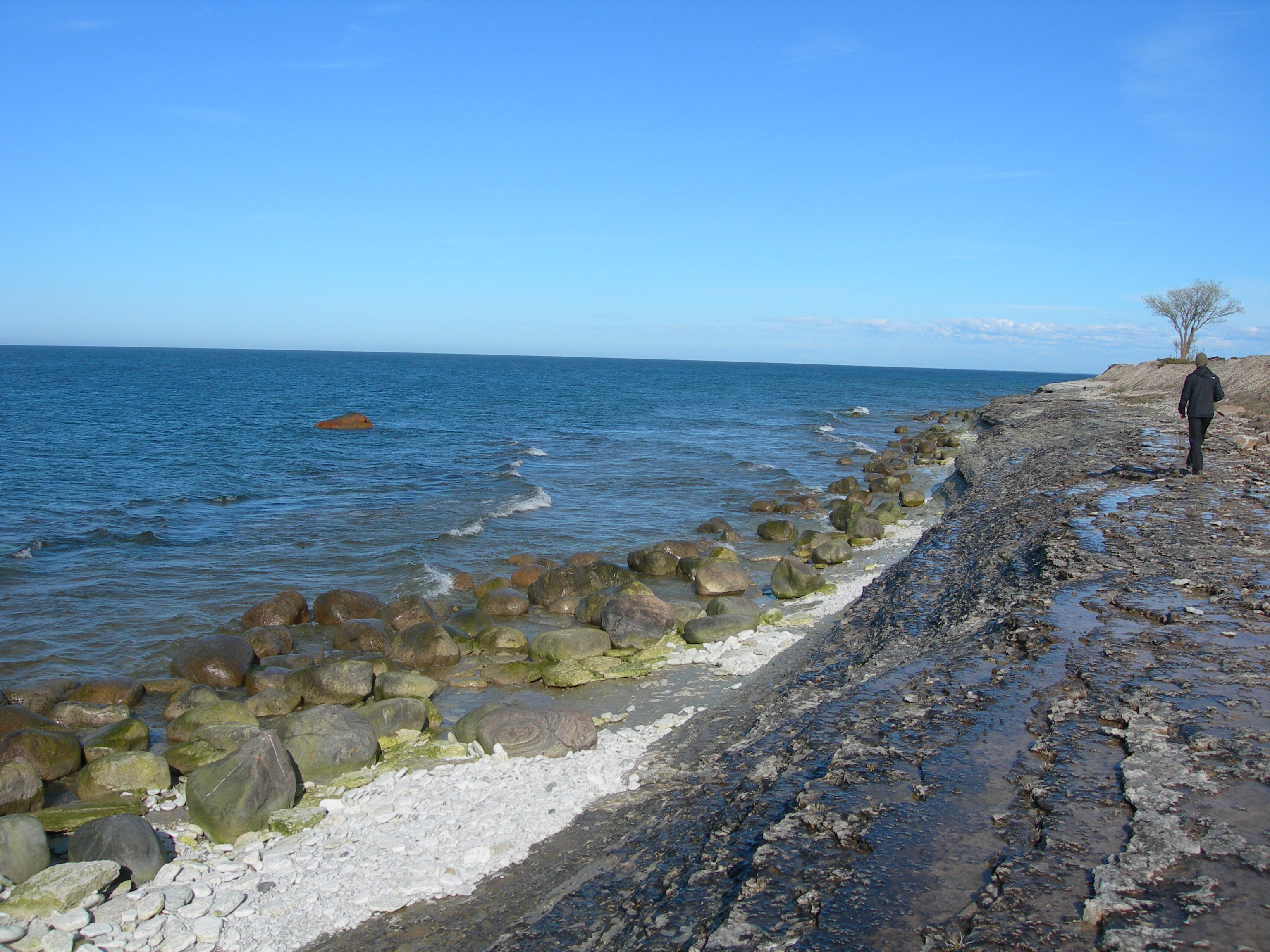Drift (geology) on:
[Wikipedia]
[Google]
[Amazon]
 In geology, drift is a name for all sediment ( clay, silt, sand,
In geology, drift is a name for all sediment ( clay, silt, sand,
gravel
Gravel is a loose aggregation of rock fragments. Gravel occurs naturally throughout the world as a result of sedimentary and erosive geologic processes; it is also produced in large quantities commercially as crushed stone.
Gravel is classifi ...
, boulder
In geology, a boulder (or rarely bowlder) is a rock fragment with size greater than in diameter. Smaller pieces are called cobbles and pebbles. While a boulder may be small enough to move or roll manually, others are extremely massive.
In c ...
s) transported by a glacier and deposited directly by or from the ice, or by glacial meltwater
Meltwater is water released by the melting of snow or ice, including glacial ice, tabular icebergs and ice shelves over oceans. Meltwater is often found in the ablation zone of glaciers, where the rate of snow cover is reducing. Meltwater can be ...
. Drift is often subdivided into (unsorted and) unstratified drift (glacial till) that forms moraine
A moraine is any accumulation of unconsolidated debris (regolith and rock), sometimes referred to as glacial till, that occurs in both currently and formerly glaciated regions, and that has been previously carried along by a glacier or ice shee ...
s and stratified drift (glaciolacustrine and fluvioglacial sediments) that accumulates as stratified and sorted sediments in the form of outwash plains, eskers, kame
A kame, or ''knob'', is a glacial landform, an irregularly shaped hill or mound composed of sand, gravel and till that accumulates in a depression on a retreating glacier, and is then deposited on the land surface with further melting of the g ...
s, varves, and so forth. The term drift clay is a synonym for boulder clay. Both are archaic terms for glacial tills with a fine-grained matrix.Neuendorf, K.K.E., J.P. Mehl, Jr., and J.A. Jackson, eds., 2005. ''Glossary of Geology'' (5th ed.). Alexandria, Virginia, American Geological Institute. 779 pp.
In the United Kingdom, drift is also applied as a general term for all surficial, unconsolidated, rock debris and sediment that is moved from one place to accumulate in another and mapped separately or otherwise diffrerentiated from underlying bedrock
In geology, bedrock is solid Rock (geology), rock that lies under loose material (regolith) within the crust (geology), crust of Earth or another terrestrial planet.
Definition
Bedrock is the solid rock that underlies looser surface mater ...
. In this usage, ''drift'' includes a wide variety of deposits, e.g. loess
Loess (, ; from german: Löss ) is a clastic, predominantly silt-sized sediment that is formed by the accumulation of wind-blown dust. Ten percent of Earth's land area is covered by loess or similar deposits.
Loess is a periglacial or aeolian ...
, glacial till, river deposits, colluvium, and so forth, of Quaternary
The Quaternary ( ) is the current and most recent of the three periods of the Cenozoic Era in the geologic time scale of the International Commission on Stratigraphy (ICS). It follows the Neogene Period and spans from 2.58 million years ...
age. However, this term is most commonly used to specifically describe glacial deposits.Allaby, M., 2013. ''A Dictionary of Geology and Earth Science''. Oxford, United Kingdom, Oxford University Press. 720 pp.
Etymology
In 1839, geologistRoderick Murchison
Sir Roderick Impey Murchison, 1st Baronet, (19 February 1792 – 22 October 1871) was a Scotland, Scottish geologist who served as director-general of the British Geological Survey from 1855 until his death in 1871. He is noted for investigat ...
Murchison, R.I., 1839. ''The Silurian System, Founded on Geological Researches in the Counties of Salop, Hereford, Radnor, Montgomery, Caermarthen, Brecon, Pembroke, Monmouth, Gloucester, Worcester, and Stafford: With Descriptions of the Coalfields and Overlying Formations.'' London, United Kingdom, John Murray, vol. 1, 768 pp. introduced the term ''drift'' to describe unconsolidated surficial sediments previously called '' diluvium''. The term ''drift'' refers to the drift hypothesis proposed by Charles Lyell
Sir Charles Lyell, 1st Baronet, (14 November 1797 – 22 February 1875) was a Scottish geologist who demonstrated the power of known natural causes in explaining the earth's history. He is best known as the author of ''Principles of Geolo ...
,Lyell, C., 1833. ''Principles of Geology''. London, United Kingdom, John Murray, vol. 3, 398 pp. as influenced by contemporary polar research, that these sediments had been transported by sea ice and icebergs drifting in marine currents. The drift hypothesis further proposed that these sediments had been released as the ice melted, to fall and accumulate on the sea floor in comparatively recent times, e.g. during the Quaternary Period. This term continued to be used long after the drift hypothesis had been abandoned in favor of the glacial theory.Harland, W.B., Herod, K.N. and Krinsley, D.H., 1966. ''The definition and identification of tills and tillites''. ''Earth-Science Reviews'', 2, pp.225-256.
See also
* Superficial deposits * Drift miningReferences
External links
* Glacial deposits {{Glaciology-stub